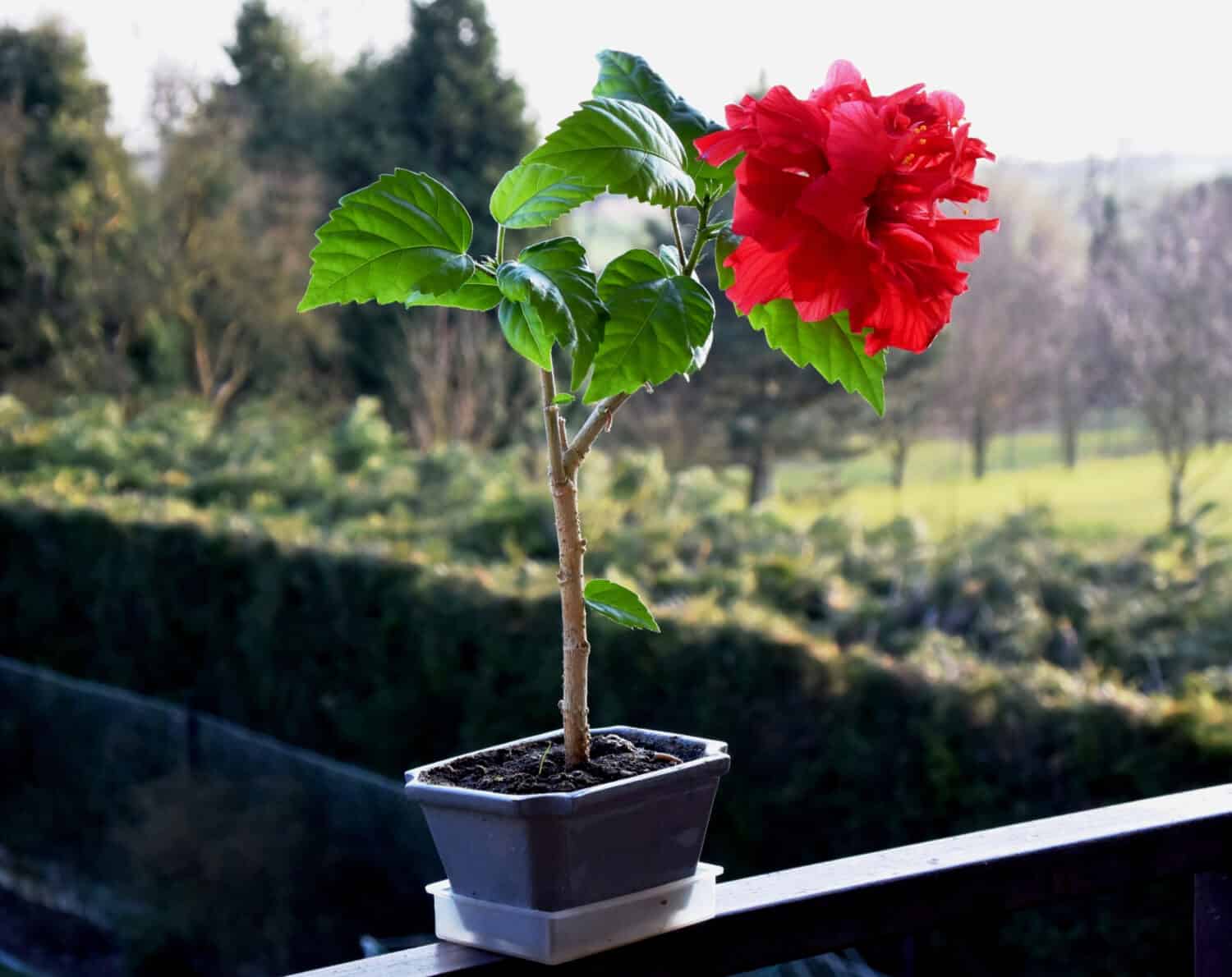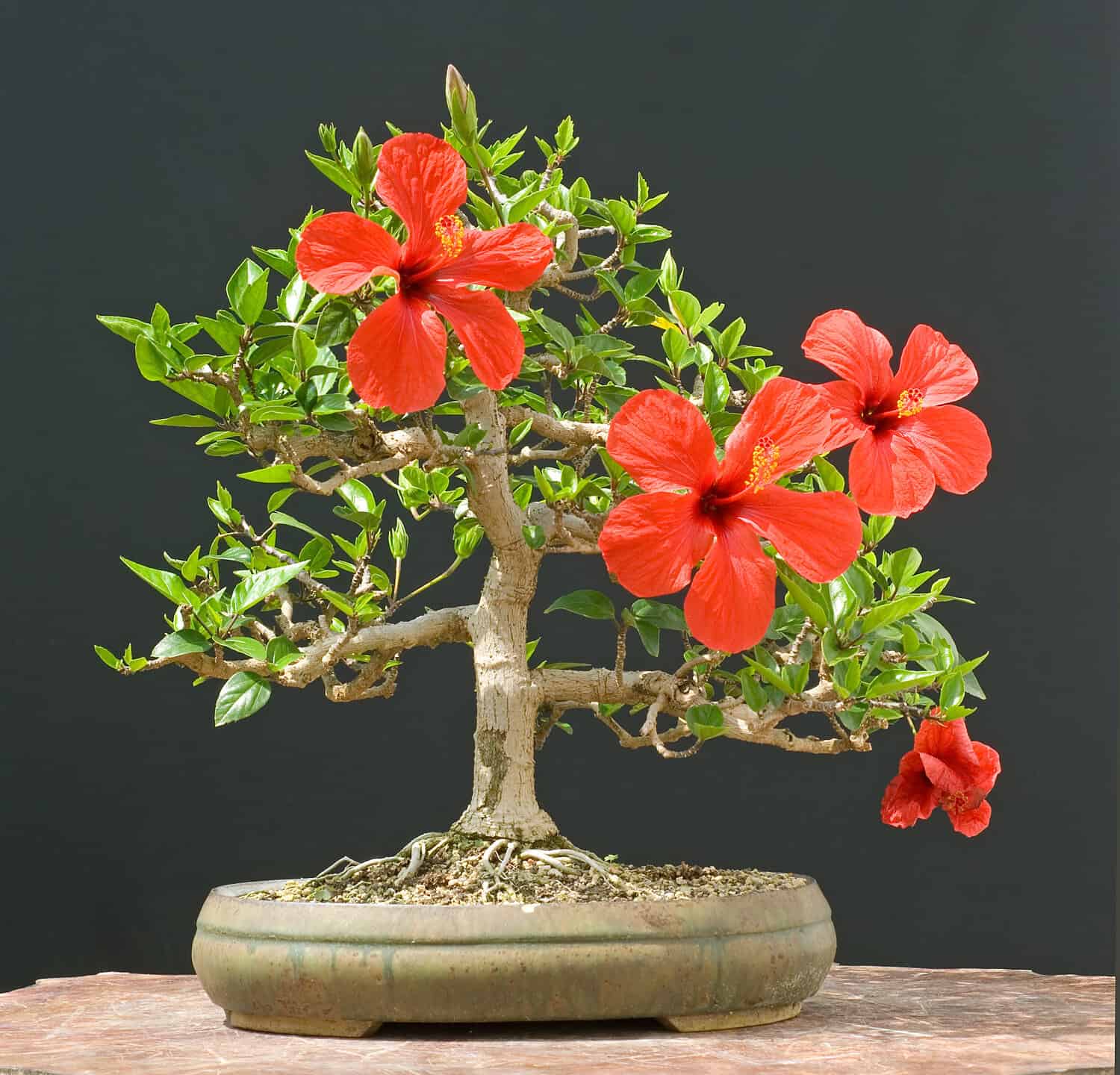Bonsai enthusiasts have long been captivated by the art of cultivating miniature trees. And among the array of species used for bonsai, the hibiscus bonsai tree stands out for its stunning beauty and tropical flair. With its vibrant flowers and glossy foliage, the hibiscus bonsai tree can add a touch of exotic elegance to any bonsai collection. However, to successfully care for and grow a hibiscus bonsai tree, it is essential to understand and provide the specific care it requires. Join us as we explore the complete care and growing instructions for the hibiscus bonsai tree, equipping you with the knowledge needed to nurture a healthy and visually striking miniature masterpiece.
| Botanical Name | Hibiscus Sinensis; Hibiscus Syriacum |
| Sunlight | Full sun or partial shade. |
| Soil | A mixture of well-draining organic matter. |
| Water | Keep moist and provide higher humidity levels. |
| For Beginners? | Intermediate – bonsai trees can be challenging to care for. |
| Indoors or Outdoors? | Both, depending on your local climate and growing region. |
Choosing the Right Hibiscus Bonsai Tree
When selecting a hibiscus bonsai tree, several factors come into play. Look for one with a sturdy trunk, well-proportioned branches, and vibrant and healthy leaves. Avoid trees showing signs of pests, diseases, or wilting foliage. Additionally, consider what flower color and shape you want. Hibiscus bonsai trees come in several cultivars, each with unique bloom characteristics. Take your time to find a tree that resonates with your aesthetic preferences and has the potential to thrive under your care.
Since hibiscus bonsai trees belong to the mallow family (Malvaceae), there are hundreds of possible species and cultivars to choose from. But not all are suitable as bonsai trees. So here are a few options to entice you and help narrow down your search:
Hibiscus syriacum (Common hibiscus)
This lovely hibiscus is vase-shaped when left to its own devices. It reaches approximately 7–13 ft (2-4m) tall. And its spectacular flowers are shaped like a trumpet in shades of white or pink.
Hibiscus rosa-sinensis (Chinese hibiscus)
This particular hibiscus species grows roughly 5–10 ft (1.5–3 m) wide and 8–16 ft (2.5–5 m). It has large, stunning, red, five-petaled flowers.
Caring For Your Hibiscus Bonsai
While the care requirements will differ slightly based on species of choice and whether you grow it indoors or outdoors, below are a few general tips.
Light and Temperature Requirements
Proper lighting and temperature are crucial for the optimal growth of hibiscus bonsai trees. These tropical plants thrive in either partial shade or full sun. Ideally, place your tree in a location that receives at least six hours of sunlight daily. A sunny windowsill or a spot in the garden with partial shade can be ideal. If you keep your tree inside, a grow light will help supplement your natural light.
Hibiscus bonsai trees also prefer a warm climate. They can tolerate temperatures between 60°F (15°C) and 90°F (32°C). It cannot handle frost or freezing temperatures. So, bring your tree indoors to protect it during the winter if you live in a colder climate.
Watering and Humidity
Proper watering is vital to ensure the health of your hibiscus bonsai tree. But there is a catch. Bonsai trees can easily dry out or get waterlogged. So, they take a little extra care when watering. Water the tree thoroughly when the top inch of the soil feels dry to the touch. Ensure the water penetrates the root ball, but let the excess drain away.
In addition to watering, many hibiscus bonsai tree species appreciate high humidity levels. To increase humidity around the tree, place it on a tray filled with water and pebbles. As the water evaporates, it creates a humid microclimate around the tree. Regularly misting the leaves can also provide an extra boost of moisture.
Soil and Fertilization
Choosing the right soil mix and implementing a proper fertilization routine is essential for the healthy growth of hibiscus bonsai trees. The soil should be well-draining to prevent waterlogged roots, yet retain enough moisture for the tree’s needs. A recommended soil mix for hibiscus bonsai trees includes a combination of bonsai soil, perlite, and peat moss. This blend ensures adequate drainage while providing the necessary nutrients.
Fertilization plays a crucial role in the overall health of the hibiscus bonsai tree. During the growing season, which typically spans spring to autumn, apply a balanced, water-soluble fertilizer formulated for bonsai trees. Generally, fertilize the tree every two to four weeks during the growing season, and reduce or stop fertilization during the dormant period in winter.

You can grow a hibiscus bonsai tree either indoors or outdoors.
©Zdenek Rogalewicz/Shutterstock.com
Pruning and Shaping Your Hibiscus Bonsai Tree
Many people fall in love with bonsai trees because they are easily pruned and adjusted into a desired shape. Pruning serves multiple purposes, including removing dead or diseased branches, encouraging branching, and maintaining the overall size and shape of the tree.
Start by removing dead, damaged, or crossing branches with sharp and clean bonsai pruning shears. This step promotes healthy growth and improves airflow. Additionally, prune back new shoots to encourage branching and create a fuller and more compact canopy. But stop pruning around June if you want to see gorgeous floral development.
Shape your hibiscus bonsai tree utilizing wiring techniques. Carefully wrap aluminum or copper wire around the branches, gently bending and positioning them into the desired shape. Be cautious not to damage the bark or apply excessive pressure that could injure the tree. Hibiscus bonsai trees will break if too much pressure gets applied.
Monitor the wiring regularly to avoid wire cutting into the wood. Remove the wire promptly when no longer needed to prevent it from biting into the bark.
Pests and Diseases
While hibiscus bonsai trees are generally hardy, they can still fall victim to common pests and diseases. Watch out for aphids, mealybugs, spider mites, and scale insects, as they can infest the tree and cause damage. If you notice any signs of pests, promptly treat the affected areas with an appropriate insecticidal soap or organic pesticide, following the instructions on the product label.
Fungal diseases, like powdery mildew and root rot, can also threaten hibiscus bonsai trees. Avoid overwatering and ensure good air circulation around the tree. And take immediate action if you spot any signs of fungal infection, such as discolored or wilting leaves. Trim off the affected parts and apply a fungicide recommended for hibiscus plants to prevent further spread.
Flowering and Dormancy
One of the most captivating features of hibiscus bonsai trees is their vibrant and showy flowers. But flowering is influenced by various factors. These include the tree’s health, age, light exposure, and overall care. Depending on which species you have, the floral colors range from blue, red, purple, orange, white, yellow, or pink.
During winter, hibiscus bonsai trees enter a dormant phase, where growth slows down, and some or all of the leaves may drop. This is a natural part of their growth cycle. Reduce watering during this period, allowing the soil to dry out slightly between waterings. Refrain from fertilizing the tree during dormancy.
As spring approaches and the weather warms, gradually increase watering and resume fertilization to support new growth. With care and attention, your hibiscus bonsai tree will transition out of dormancy and begin a new growth cycle. Then it will prepare itself for another round of spectacular blooms.
Training and Maintenance
Ongoing training and maintenance are essential for the long-term success of your hibiscus bonsai tree. Regularly monitor the tree’s growth and adjust wiring to guide branches into the desired shape. Prune back any excessive growth and maintain the overall form of the tree.
Consider transitioning to larger bonsai pots to accommodate its growth as the tree matures. Repotting is typically done every two to three years, during the spring or early summer, to refresh the soil and provide more space for root development. When repotting, gently prune the roots to encourage a healthy root system and trim any excessively long or tangled roots.
Patience and Adaptation
Cultivating a hibiscus bonsai tree requires patience and the ability to adapt to the tree’s specific needs. Each tree is unique, and it may take time to understand its growth patterns, flowering habits, and response to different environmental conditions. Don’t be discouraged if your tree doesn’t immediately meet your expectations. It will thrive and reveal its true beauty with time, proper care, and adjustments.
As you care for your hibiscus bonsai tree, take note of its responses to various cultural practices. Observe how it reacts to different amounts of light, watering routines, and fertilization schedules. Doing so will allow you to fine-tune your care approach and provide the best conditions for your tree’s growth and development.

Caring for a hibiscus bonsai is worthwile once you see the amazing flowers.
©Walter Pall/Shutterstock.com
The photo featured at the top of this post is © Walter Pall/Shutterstock.com
Thank you for reading! Have some feedback for us? Contact the AZ Animals editorial team.






